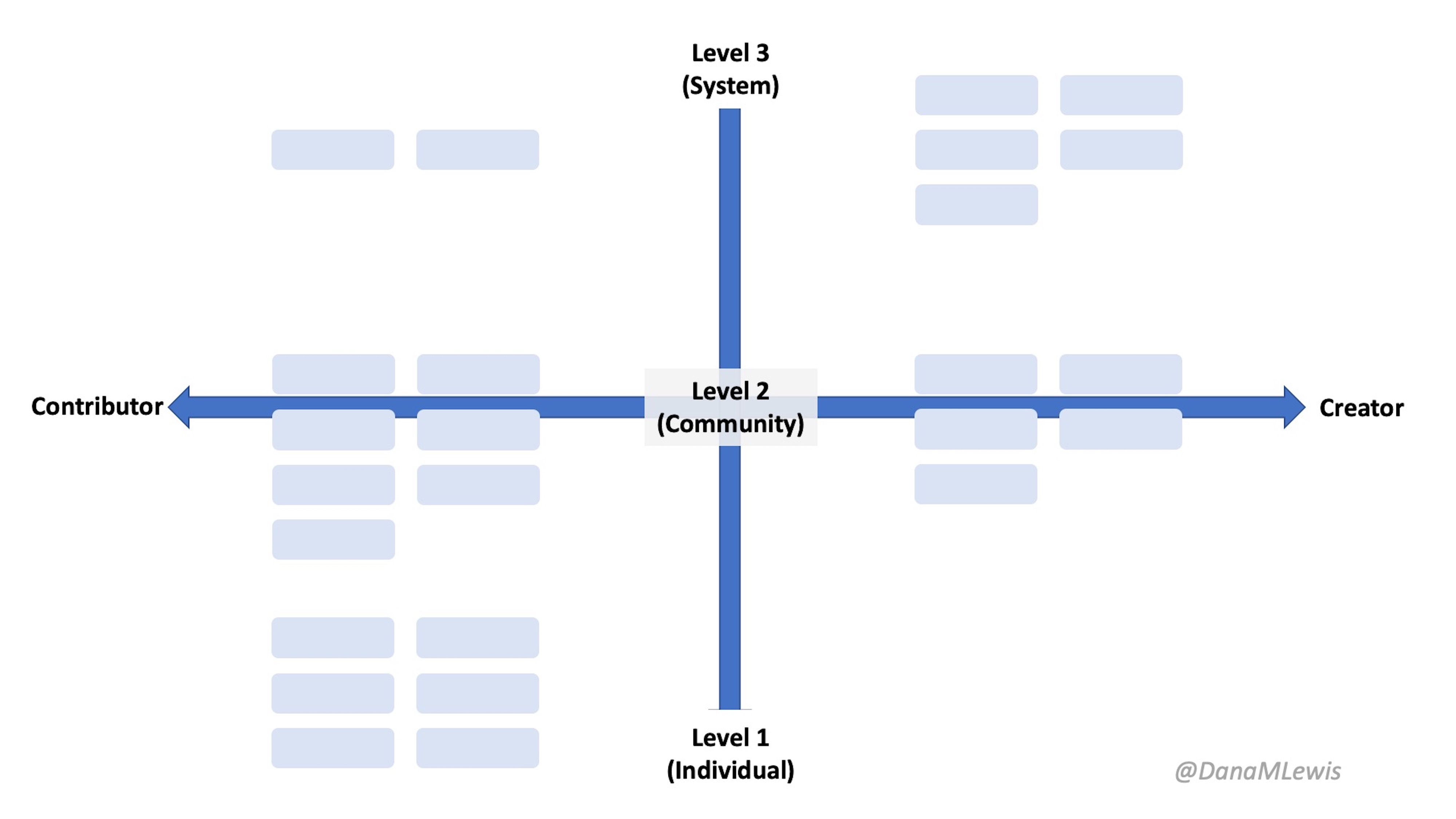I’m excited to share another paper is out that has been in the works for a while. This paper describes the methods we used to design the Convening The Center project, and an artifact we ended up creating in the process that we think will be helpful to people with lived experience and traditional researchers and others who want to partner with patients!
As a quick recap, John Harlow and I (Dana Lewis) collaborated to create Convening The Center (CTC) to bring people (known as “patients” and “carers”, or people with lived experience based on health and healthcare experiences) together, solely to allow them to connect and convene about what they care about. There was no agenda! It’s a bit hard to design an agenda-less meeting, and we put a lot of thought into it. We ended up converting from an in-person gathering in 2020 to a digital experience due to the COVID-19 pandemic, which also required a lot of design in order to achieve a digital space that allowed virtual strangers to feel comfortable connecting and discussing their experiences and perspectives.
One theme that came up throughout the first individual round of discussions (Phase 1) was that there was a spectrum of participation; some people participate and contribute as individuals to other projects and organizations, whereas others choose to or find themselves in situations that necessitate creating something new. I also saw there were different levels, from individual to community or system-level creation and contributions.
Thus, the Two-Spectrum Framework for Assessing Patient Experience was created, and we used it to “see” where our 25 participants from CTC fell, based on our Phase 1 discussions, and this helped us group people in Phase 2 (alongside scheduling availability) for smaller group discussions.

It was really helpful for thinking about how patients (people with lived experience) do things; not just the labels we are given by others. And so I decided we should try to write it up as a paper so that others could use it as well!

As of today, our paper is now out and is open access: “From Individuals to Systems and Contributions to Creations: Novel Framework for Mapping the Efforts of Individuals by Convening The Center of Health and Health Care”.
I encourage you to read it, and in particular the “Principal Findings” section of the discussion that talks more about the Two-Spectrum Framework for Assessing Patient Experience. Notably, “Rather than making claims about what patients “are,” this framework describes what patients “do,” the often-unseen work of patients, and, importantly, how they do this work “, and the implications of this.
We hope you find something in this paper useful, and we’re excited to see how this framework might be further used in the future!
—
Huge thanks to our advisors, Liz Salmi and Alicia Staley, who not only advised throughout the project but also co-authored this paper with us. And of course, ongoing respect, admiration, and appreciation to the 25 participants of Convening The Center, as well as our artist collaborator, Rebeka Ryvola who’s beautiful work is represented in this paper!